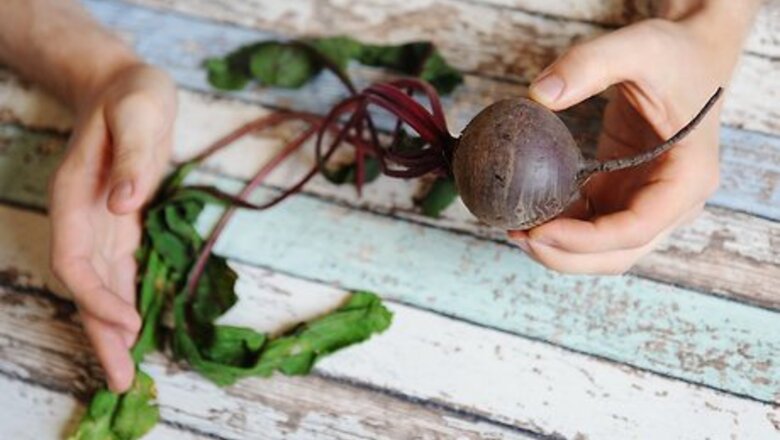
views
Selecting and Preparing Beets
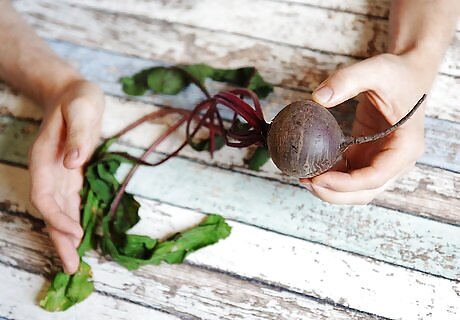
Choose beets with smooth skins and no surface cuts or bruises. Avoid choosing beets that have flabby skins, are shriveled, or are soft with moist spots. If you happen to have beets that have the leaves attached, make sure they are dark green in color, small, and crisp to the touch.
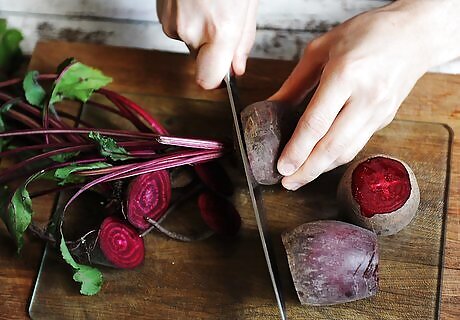
Cut the roots of the beet and remove the greens. Although a knife can be used to cut the roots and greens, using a pair of scissors is easier. In some cases, if you have purchased from a grocery store or a farmer’s market, the greens and part of the roots may have already been removed. When trimming the beets, leave at least 2 inches (5.1 cm) of the roots and ⁄2 inch (1.3 cm) of the stems. If any more is removed, the beets may bleed during the cooking process. Don’t throw the greens away if they are fresh! You can use them in a salad or cook them like spinach and add vinegar, salt, and pepper for added flavor.
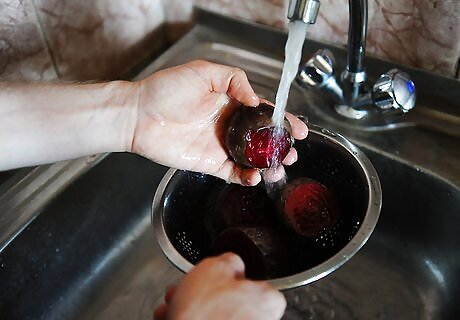
Wash and scrub the beets under cold running water. Use a vegetable brush to remove any dirt. No worries if you don’t have one, the beets can be scrubbed with a washcloth just as easily. Place the beets in a colander to drain any excess water.
Cooking the Beets

Bring a large pot of water to boil. Use high heat and bring your stockpot or large pot to a rolling boil.
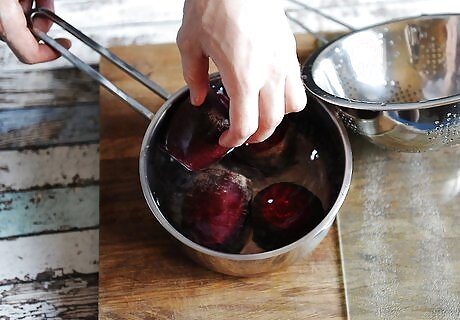
Place the cleaned beets in the boiling pot of water and cover. Cook the beets on lower heat until they are tender. For small beets, this should take 25 to 30 minutes. About 45 to 50 minutes is needed to cook medium to large-sized beets. If you are concerned about the beets bleeding while boiling, add 2 tablespoons (30 mL) of vinegar or lemon juice to the water. Boiling is the most common way of cooking beets, but they can also be oven roasted. To roast your beets, place the washed and scrubbed beets in a shallow baking dish filled with ⁄4 cup (59 mL) of water. Cover with aluminum foil, tightly wrap and cook for one hour at 400 °F (204 °C). Some people choose to steam their beets in preparation for storing. To steam your beets, fill a large stockpot with water and bring to boil. Place the beets in the steamer insert, cover, lower the heat, and cook for about 30 minutes or until done.
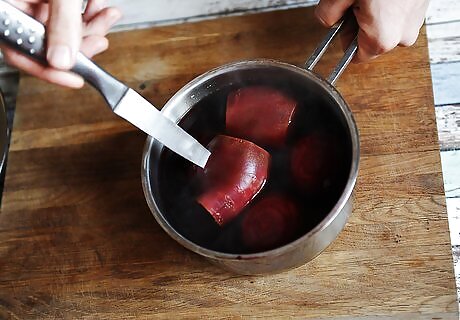
Check to see if the beets are tender. As you approach the end of the cooking time, use a knife to check for doneness. Choose the thickest part of a beet and insert a knife or fork. If the knife or fork enters into the beet easily, it’s cooked. If you feel some resistance, the beets need more time to cook. If your beets are not tender enough, keep checking on them in 15-minute intervals until ready.

Drain the cooked beets in a colander and cool in an ice bath. Cooling the beets immediately stops the cooking process and makes them safe to handle. Let the beets sit in the ice bath for 5 to 10 minutes. Cooling the beets in an ice bath also helps to loosen the skins on the beets for easy removal.
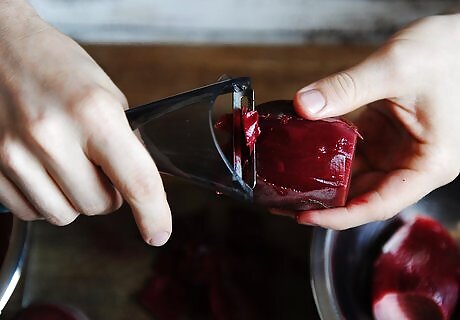
Remove the roots and stems with a knife. Use a vegetable peeler to remove the skins, be careful not to remove more than is necessary. If you don’t have a peeler handy, you can gently rub the skins off under cool running water. Be sure to wear a pair of gloves, to protect against your hands getting stained.

Cut the beets into ⁄4 inch (0.64 cm) slices. Alternatively, you can cut into quarters, or dice them. If the beets are around 1 inch (2.5 cm) in size, they can be left whole. However, be aware that whole beets do not freeze as well.
Storing the Beets

Put the beets into plastic freezer bags. You can use Ziploc bags for freezing. For single servings, the one-quart size is best. Be sure to leave about ⁄2 inch (1.3 cm) or 1 inch (2.5 cm) of space at the top of the bag before sealing for storage.

Remove as much air as possible from the plastic bags and tightly seal. One way to remove air is to push the air out of the bag and seal it, leaving the end slightly open. At the open end, insert a drinking straw and suck out all of the remaining air and then quickly seal the bag. Another way of removing air is to use a vacuum sealing system. This method is guaranteed to remove all of the air in the bag and reduce the chance of freezer burn. These systems can be costly, but if used frequently are quite valuable.
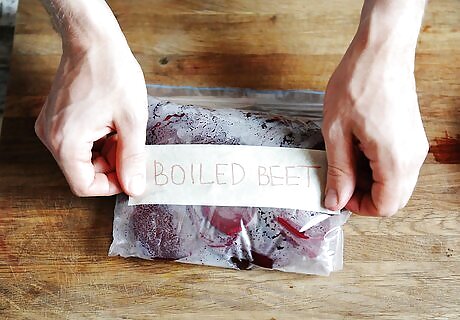
Label the plastic bags. Make sure you also note the current date. Beets can be kept for up to 12 months in a deep freezer. If you keep your beets in the freezer for 18 months or longer, they can end up shriveled and soggy. The best time to use the frozen beets is between 6 and 9 months.















Comments
0 comment